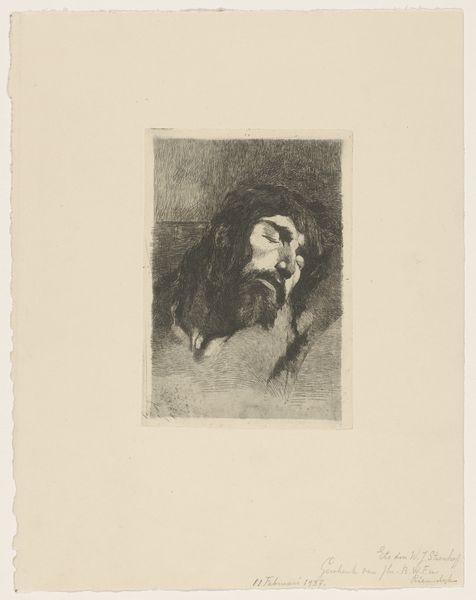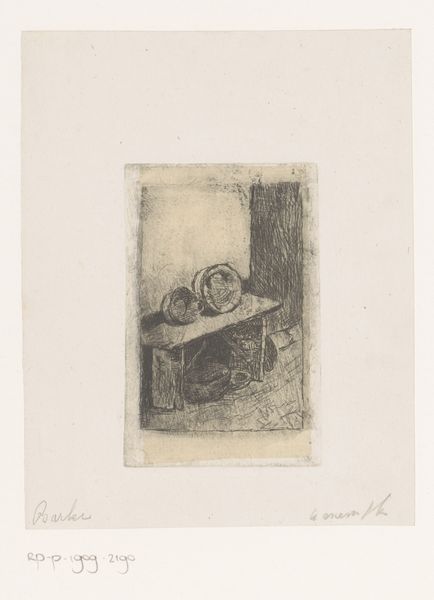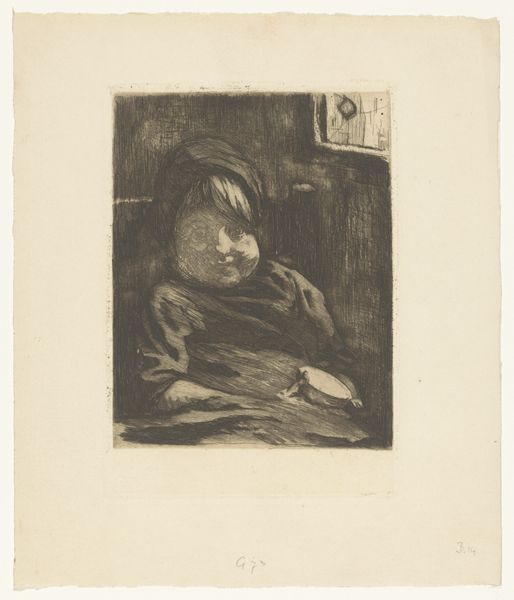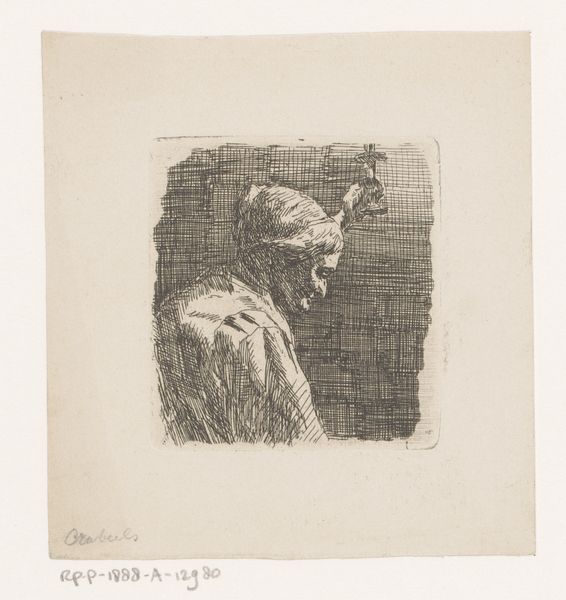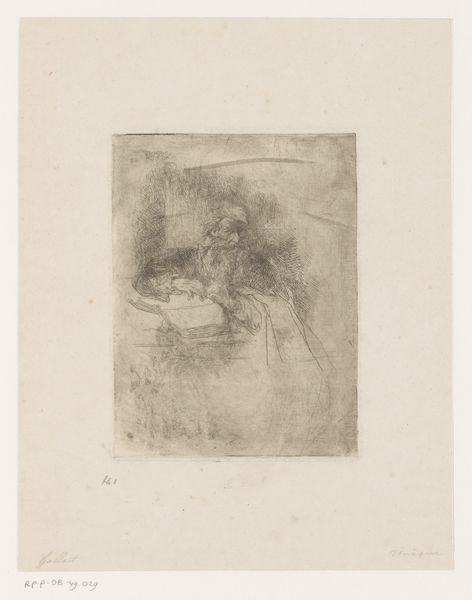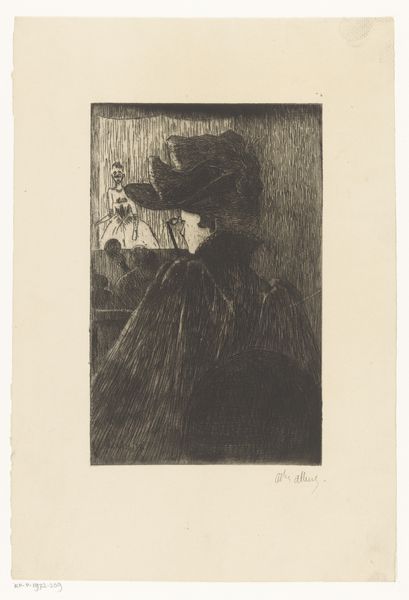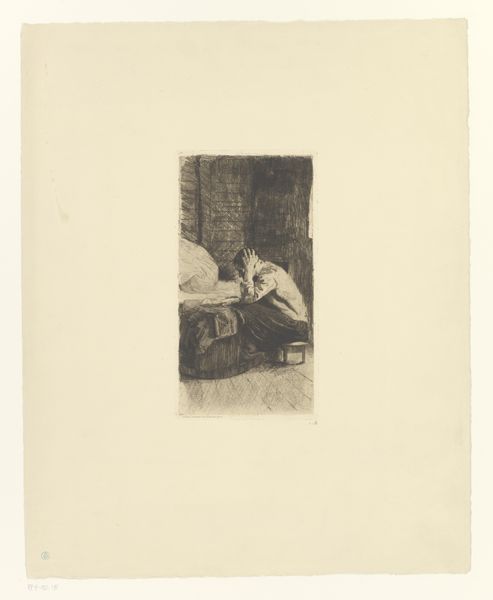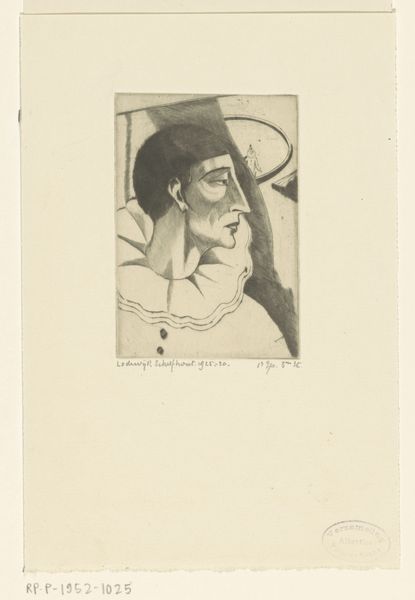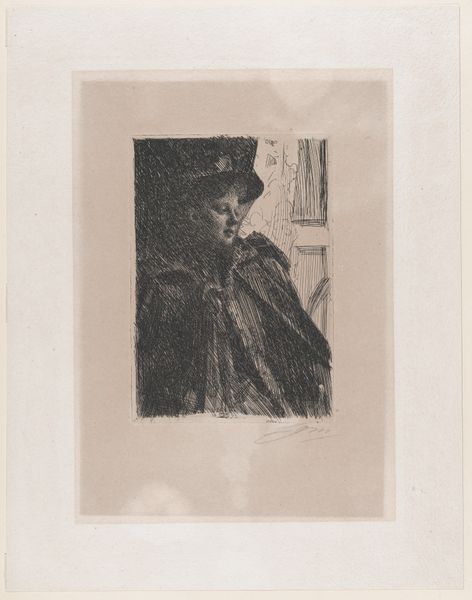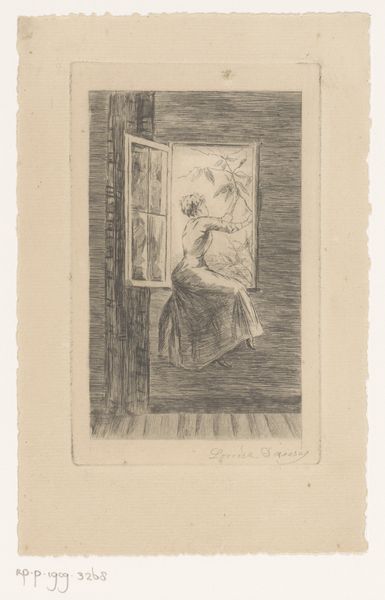
drawing, print, etching, ink, pencil
#
portrait
#
drawing
# print
#
etching
#
pencil sketch
#
ink
#
pencil
#
realism
Dimensions: height 109 mm, width 87 mm
Copyright: Rijks Museum: Open Domain
Curator: Allow me to introduce Willem Witsen's "Man met pet," created around 1887 to 1888, currently residing here at the Rijksmuseum. It's an etching, ink and pencil on paper. Editor: There's a quiet solemnity about it, don't you think? The stark lines, the way the figure is framed – it feels intensely private, almost as though we're intruding on a moment of contemplation. Curator: Precisely! Witsen masterfully employs line and shade. Note the contrast between the darker regions defining the subject's features and clothing, set against a comparatively blank background. This directs attention and accentuates a particular realism inherent in portraiture from that era. Editor: Indeed. The man's cap and the suggestion of rough clothing imply a working-class subject, typical of the Realist movement's focus on depicting everyday life. The gaze averted to the side, barely visible from under the cap...it invites us to consider what these marginalized figures must have endured. How did societal forces impact his self-perception? Curator: Consider the medium: etching allows for fine lines and nuanced shading. Note the meticulous detailing in rendering the man’s weathered face. Semiotically, we could read the depth of those lines as indexical of hard-won experience or character itself. Editor: These kinds of portraits also helped forge a nascent sense of national identity. In showing laborers, and others commonly overlooked in conventional society, artists engendered a greater cultural awareness. Who has access to representation in art? It speaks volumes. Curator: It offers more than simple reportage, wouldn't you agree? Look closely at the layering, the texture created through varied pressure—he’s coaxing the viewer's eye along certain pathways through deliberate construction. The cap becomes more than a cap; its positioning and shading evoke shadow but become emblematic too. Editor: That’s so very true. We gain such important insights looking back through time. And realizing how similar were concerns for self-expression, dignity, and simple respect for people trying to get through the day. Curator: Well, reflecting upon Witsen’s technique helps me understand it that much more—not only what but precisely *how* he chose to render his vision into lasting artifact. Editor: For me, seeing art like this brings to life so many questions about access and cultural shifts through the years.
Comments
No comments
Be the first to comment and join the conversation on the ultimate creative platform.
